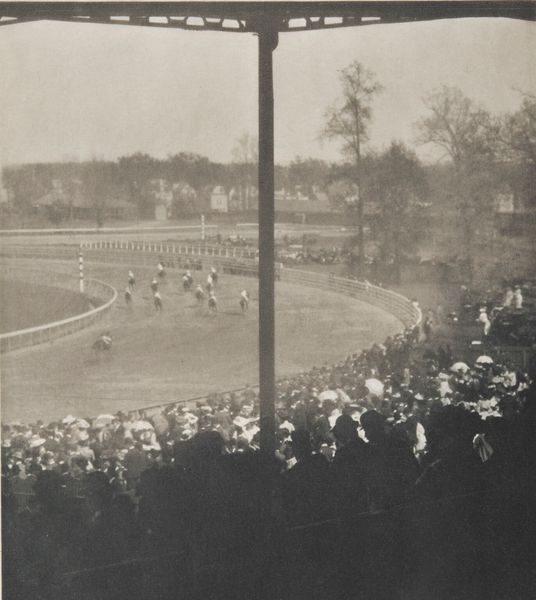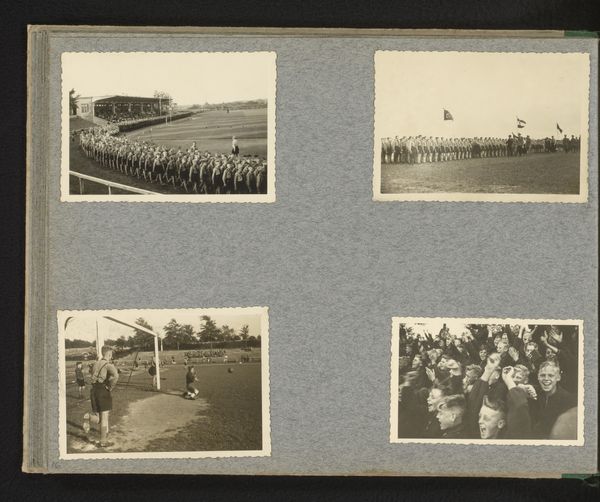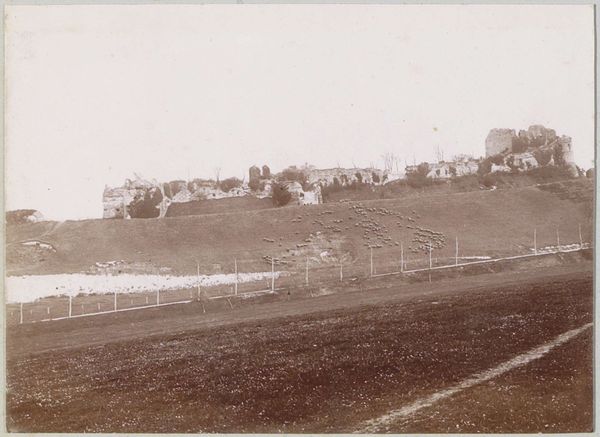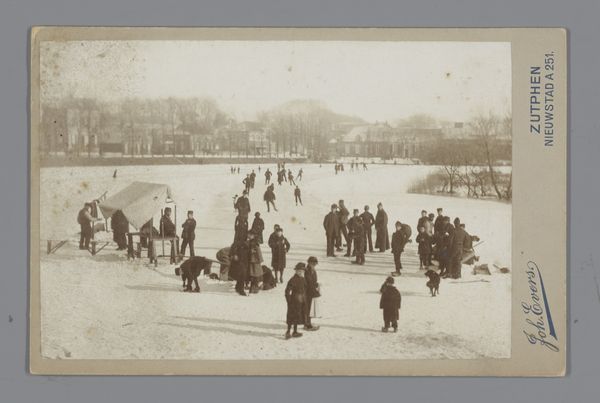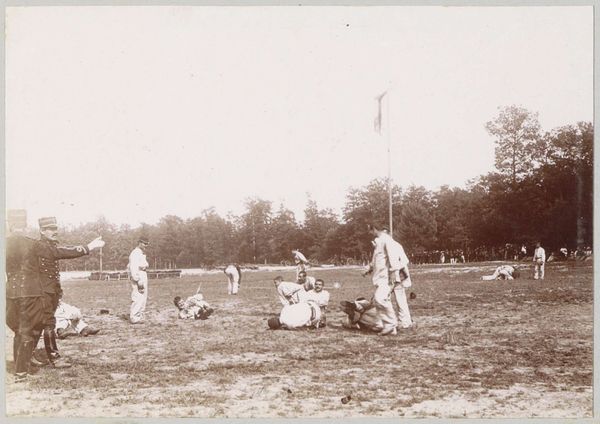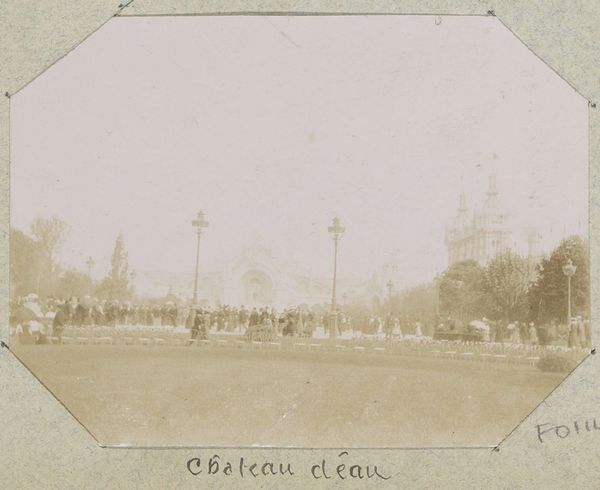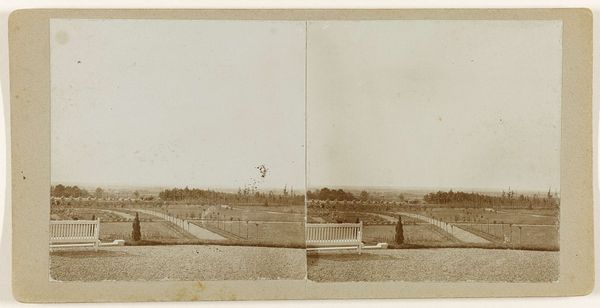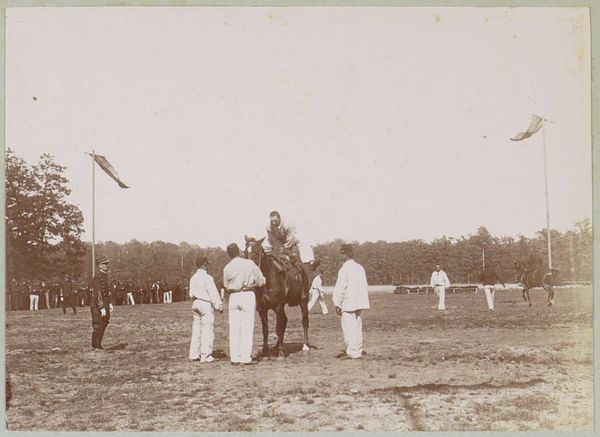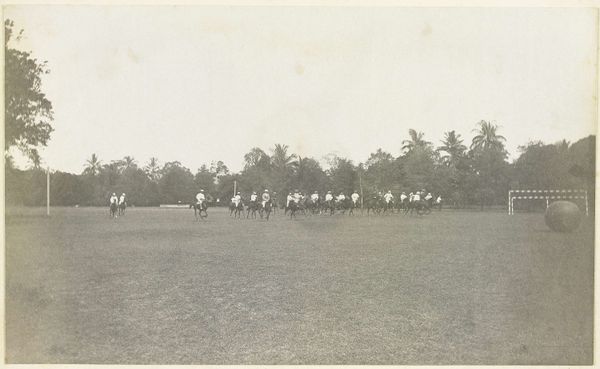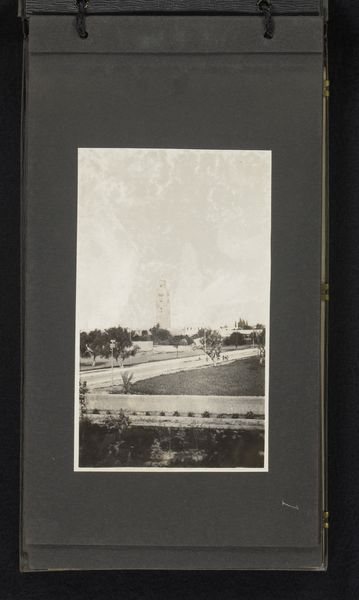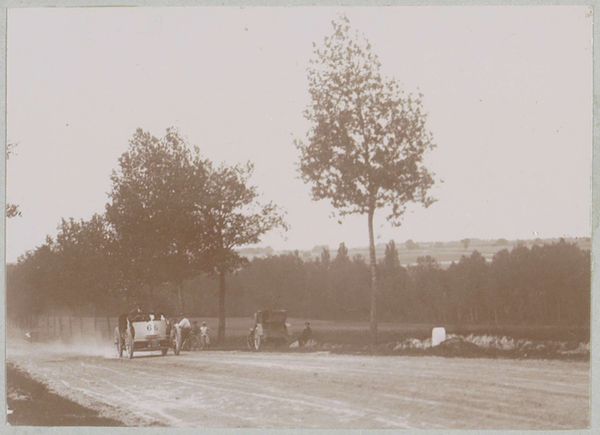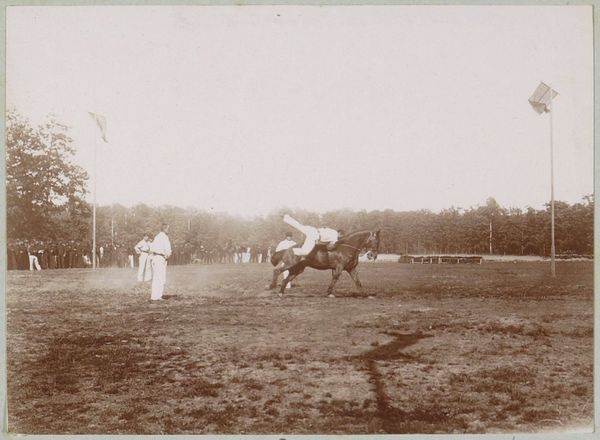
Dimensions: 30.8 × 26.4 cm (image); 38.4 × 30.4 cm (paper); 53.7 × 44.5 cm (mount)
Copyright: Public Domain
Editor: So, we’re looking at Alfred Stieglitz’s "Going to the Post, Morris Park" from 1904. It's a photograph, and immediately the monochrome tones and slightly soft focus give it a wistful feeling. The blurred figures almost give a sense of bustling movement. What do you make of its depiction of leisure and sport? Curator: It's crucial to remember that Stieglitz was working during a period when photography was still fighting for recognition as a fine art. Consider how Pictorialism, the style Stieglitz championed, consciously mirrored painting and printmaking through its focus on soft focus and atmospheric effects, to align itself with established art forms and garner credibility in galleries and salons. Doesn’t it seem to present leisure here as something picturesque, carefully constructed? Editor: Yes, now that you mention it, there is a distinct impression of "composing" a scene, instead of plainly capturing reality. Do you think this perspective shaped its reception among the public and institutions? Curator: Absolutely. His strategic maneuvering was instrumental in creating dedicated gallery spaces like "291," fostering intellectual dialogue and legitimizing photography's claim to artistic significance. The focus on upper and middle classes shaped both what was considered artistic subject matter and who was consuming it, effectively building an audience who appreciated its aesthetic value. Editor: That makes so much sense. The composition feels staged not just for aesthetics but also for building respect and social standing. Curator: Precisely. And think about how the photographic lens itself can be used as a tool, to include and exclude, constructing narratives about whose experiences are prioritized and why. Considering his elite background, the image prompts questions about access, power, and the selective portrayal of society during the turn of the century. Editor: It definitely brings new dimensions to appreciating Stieglitz’s image! It is not only capturing the past but influencing what and who is remembered in history. Curator: Exactly, and by being aware of such background information and dynamics, we can have a nuanced appreciation for the artwork.
Comments
No comments
Be the first to comment and join the conversation on the ultimate creative platform.
